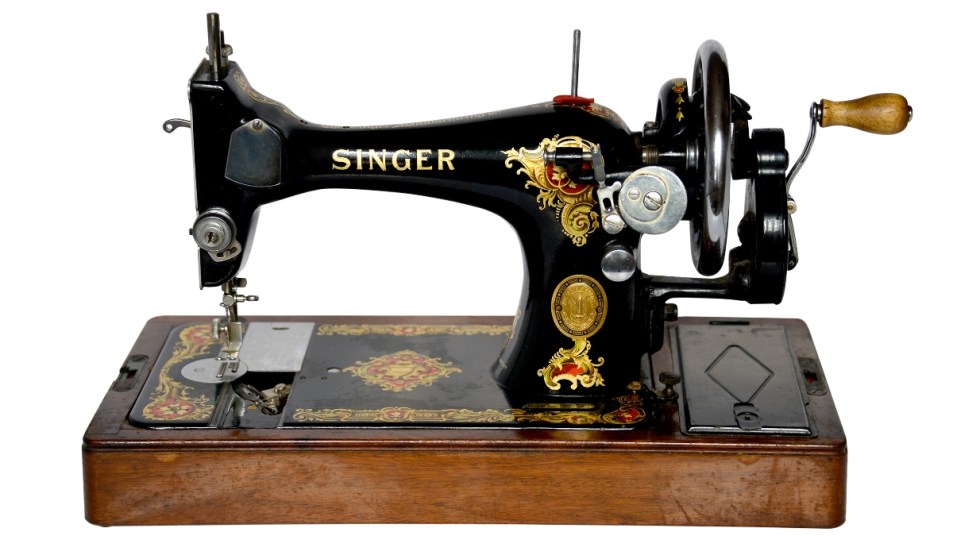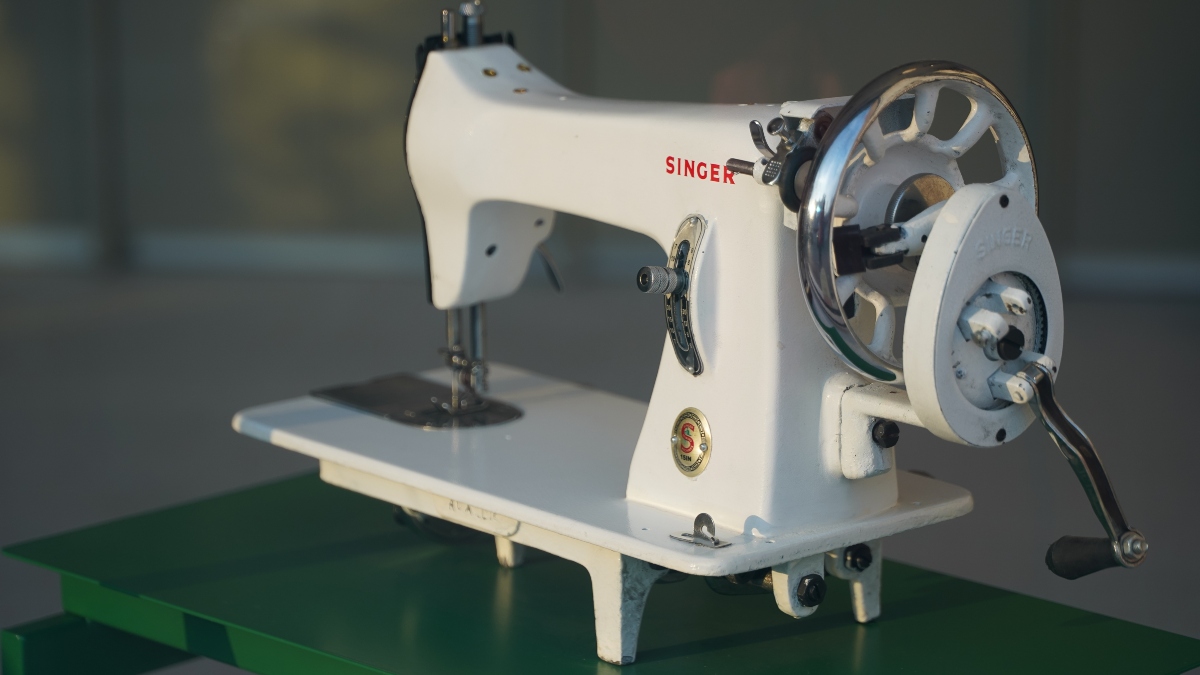This Singer Sewing Machine May Be Worth $800 or More
Here's how to assess your machine's worth.

Family heirlooms are hard to part with, especially if they’ve been passed down for generations. On the other hand, some heirlooms are difficult to maintain and may be worth letting go — particularly when they sell for as much as $800. Singer sewing machines fall into the latter group.
While plenty of antique sewing machines exist, Singers are arguably the most well-known, and as such, are in high demand. Even machines created as late as 1970 have value. (In other words, you may get a very good price on a machine that’s not that old.) So, how do you know if you have a valuable sewing machine, and how do you find out how much money you could get for it? To help you determine your machine’s age and value, read on.
What’s the history of the Singer sewing machine?
In 1819, inventor Elias Howe created the first American sewing machine. It was patented in 1846 and had an enormous impact on society. (Women who wanted a job could now find employment operating sewing machines at large-scale factories.) In 1851, another inventor named Isaac Singer, patented a new sewing machine that improved Howe’s original design. Whereas Howe’s machine had the fabric hanging vertically, held by pins, Singer’s machine had the fabric resting on a table. Singer also had a wooden treadle (the precursor to the electric pedal), which freed the sewer’s hands to guide the fabric. (Wondering what this looked like? Check out the treadle demonstration below.)
In 1889, Singer manufactured the first electrical sewing machine. Within six years, nearly 14 million machines were manufactured and sold. (By 1925, a whopping 98 percent of farming families and 95 percent of urban families owned a sewing machine.) But the machines were heavy and unwieldy — so in 1933, Singer released the Featherweight model, which became the brand’s most popular product. By that time, other companies had created their own versions of the sewing machine. Singer, however, had already cemented itself as the leading manufacturer.

How can you tell how old your Singer sewing machine is?
To determine the age of your sewing machine, look for the serial number. If your machine is a/an:
- Hand crank model with a treadle, look on the throat plate or bed of the machine. The serial number will have up to eight numbers.
- Electric model with a treadle, look on the righthand side of the machine. The code will be two letters followed by six numbers.
- Electric model, look underneath the machine. The code will be two letters followed by six numbers.
- 1960s to current model, look on the front or side of your machine.
Once you have the serial number, check it in this Singer serial number database, which is approved and endorsed by the brand. The numbers are are in alphabetical order, based on the first two letters preceding the number. The database also includes serial numbers without letters.
What increases the value of a Singer sewing machine?
There are three key factors you should consider before putting your machine up for sale: age, condition, and whether it was part of a limited production run. (A limited production run refers to a rare model — one that doesn’t have a lot of existing copies.)
For sewing machines, the age is important only up to a certain point. (A machine is considered antique if it is more than 100 years old, and vintage if it is less than 100 years old.) More recent sewing machines may be worth more money than older ones if they still work and are in excellent condition. For instance: this manual, ornate Singer sewing machine from 1904 is listed at $552 on eBay, and it is missing a few original parts, like the shuttle. This electric, Featherweight Singer from 1934 is listed at a higher price — $835, because it is in excellent, working condition and has all of its original parts.
Why are working vintage sewing machines worth more than antique machines? While some buyers are collectors, many of them are sewers who intend to use the machines they buy. Thus, most buyers want a product that is in excellent, working condition. Other factors that increase the value of a machine include:
- It has no rust.
- The machine has the original treadle, if it requires a treadle.
- It comes with the original foot pedal, if it requires one.
- The machine performs well — it’s been described as smooth and fast.
- Parts are easily available, which is helpful if the buyer wants to use it and take care of it.
Original carrying cases and sewing tables also increase the value, but not significantly.
Which Singer sewing machines are worth money?
Any Singer sewing machine that dates back to the 1960s or earlier and is in good, working condition will have some value (around $100 or more). Still, some vintage models are in high demand because the International Sewing Machine Collectors Society (ISMCS) marks certain machines as better than others.
For instance, ISMCS and Singer itself state that the Singer 201 is the best overall vintage sewing machine that money can buy. In fully working condition, this model costs between $305 and $489. It was produced in large quantities from the 1920s to the 1950s, so finding parts is relatively easy. Plus, it sews up to 1,100 stitches per minute, is quieter than similar vintage models, can sew denim and leather, and comes in electric and non-electric versions.
To help you figure out a price range for your machine, check out the prices of some models selling on eBay:
- Vintage Singer Sewing Machine, 1963, Mint Green Featherweight with case, electric very good condition: $530
- Antique Singer Sewing Machine, 1930 or earlier, original wood base included, electric, very good condition: $800
- Vintage Singer Sewing Machine, 1941, original case included, very good condition: $500
- Antique Singer Sewing Machine, 1910, cabinet included, not in working condition (needs a new belt): $95
How do you know if you should sell your machine?
Ultimately, only you will know whether your sewing machine is worth selling — so make sure you research the model to get a price estimate before making your decision. Getting rid of a family heirloom is not easy! You can always wait a few more years for the machine to increase in value, and reassess at a later date.













